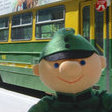
Adding motors, lights and sensors to a single hub
By
Desvejk, in LEGO Train Tech
-
Recently Browsing 0 members
No registered users viewing this page.

By
Desvejk, in LEGO Train Tech
No registered users viewing this page.